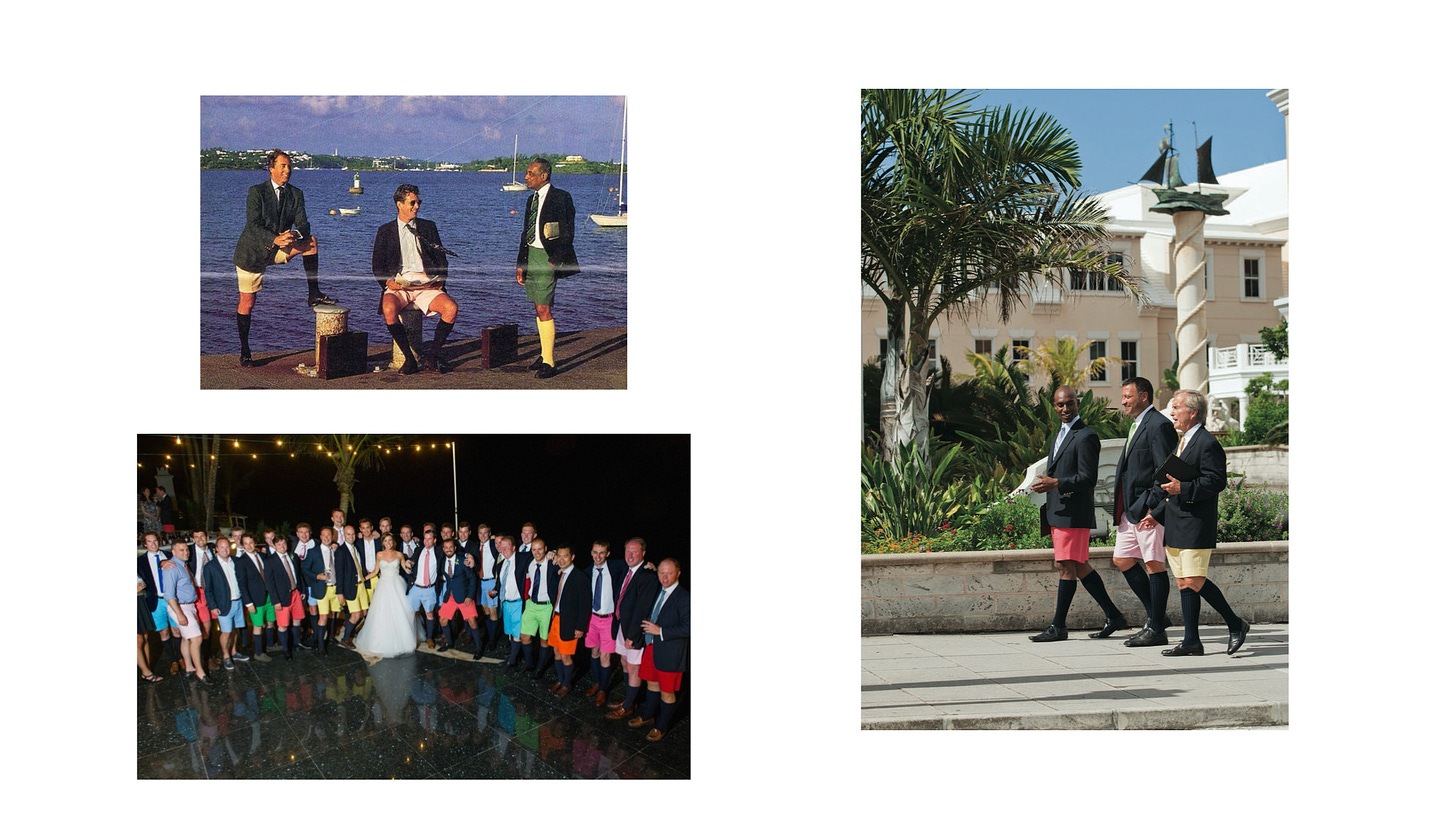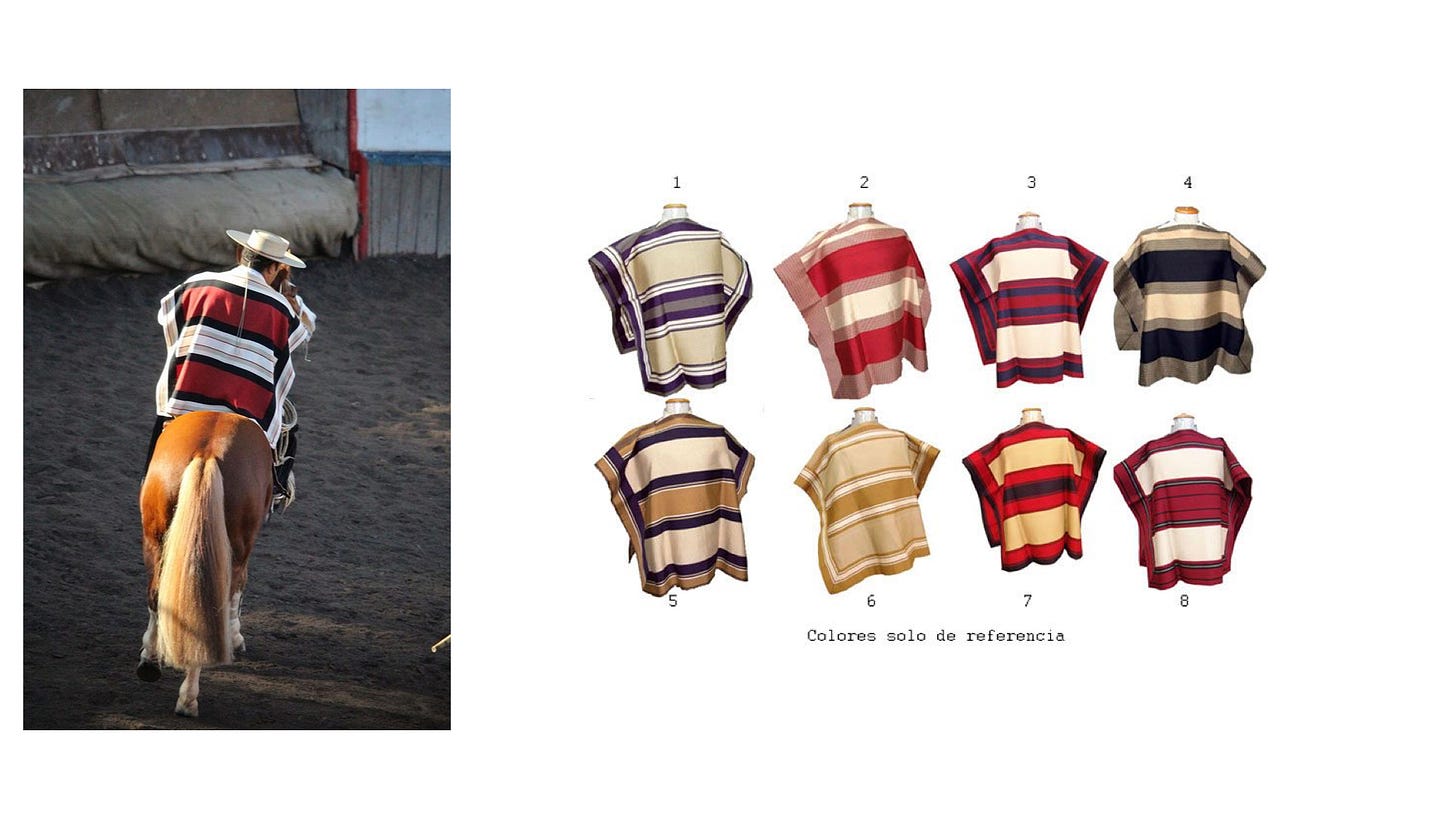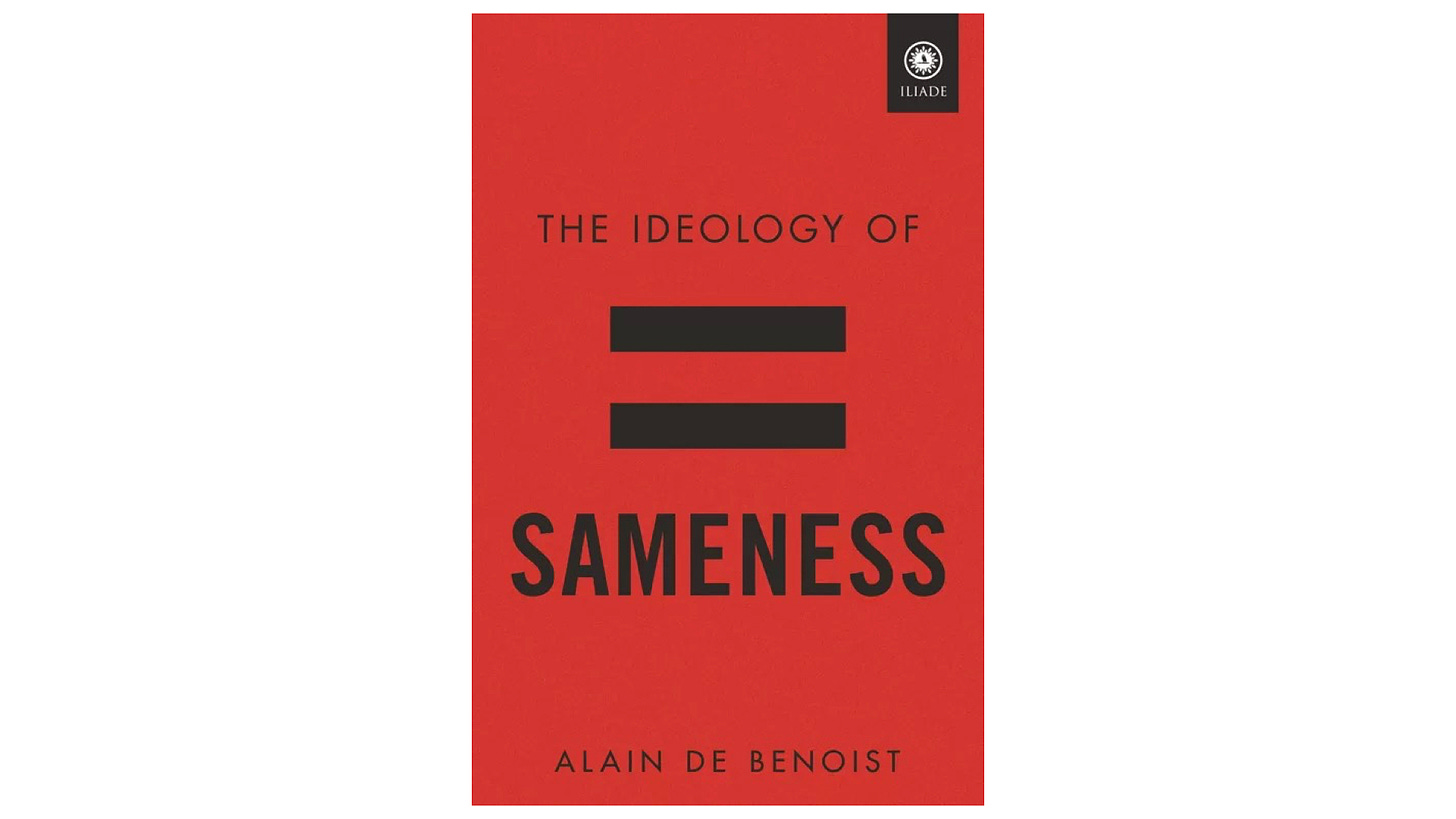Notes: Black T-Shirts, Murakami and The Ideology of Sameness
Navigating Cosmopolitan Uniformity Through Murakami's Lens and Beyond

The other evening, browsing the shelves of a local used bookstore, I found myself engrossed for a good twenty minutes in Haruki Murakami's non-fiction gem, “Murakami T: The T-Shirts I Love”.
Murakami is known for his impressive vinyl collection and passionate essays on running; however his T-shirt collection has remained relatively private enthusiasm until now.
'Murakami T' grants readers an intimate view into this personal hobby, showcasing a diverse collection of T-shirts: from treasured music concert memorabilia and pristine whiskey-brand shirts, to beloved literary bookstore finds, and even the T-shirt purchased for a dollar in Kauai, which inspired his acclaimed short story, 'Tony Takitani.’

The images of the T-shirts are captured in their authentic states—laid flat, some wrinkled, others well worn—and are paired with Murakami's concise, yet revealing essays. These writings, ranging from his enjoyment of a Guinness in Irish pubs to his delight in relishing in his habit of eating a hamburger upon touching down in the USA , to his musings on the 1980s Hawaiian surf scene, provide a rich tapestry of his varied interests. Together, they paint a vivid portrait of Murakami's uniquely eclectic character, each T-shirt reflecting a different facet of his idiosyncratic personality and life experiences.
I recommend the book for fans/admirers of Murakami. There is a short interview with a Japanese men’s magazine at the end that further connects his experiences in fashion to his writing and aesthetics.

Murakami's collection of T-shirts, a seemingly trivial subject, serves as a microcosm for the broader dynamics of cultural exchange and conformity. The personal items like T-shirts symbolize larger cultural and global trends that Murakami engages in.
All the shirts in the collection feature English language and reflect his position in a globalized sameness/ a globalized “Americana” and are often a critique or reason for his popularity as an author.
Just as his T-shirts are from various global sources, his writing often blends different cultural elements, transcending traditional Japanese literary styles.
This “globalized” nature of Murakami serves as an interesting vortex in globalized cosmopolitan world view. While his works are a major driver of worldwide interest and popularity in contemporary Japanese literature his connection to his home culture and global culture is very nuanced and complex.
On this topic I recommend Tomoki Wakatsuki, The Haruki. Phenomenon Haruki Murakami as Cosmopolitan Writer. The work explores the "Haruki Murakami phenomenon" deeply highlighting the global appeal of the Japanese author who breaks traditional literary constraints and writes in a globalized cosmopolitan fashion.
Murakami's works, enjoyed by a diverse and worldwide readership, challenge the conventional definitions of Japanese literature and identity. The Wakatsuki’s analysis delves into Japan's struggle with its dual identity, balancing a curiosity about the outside world with a desire to maintain its unique cultural heritage. It also discusses the shift in how Murakami’s texts reflect a Japanese society shift post war towards a more cosmopolitan and multicultural understanding, reflecting in the younger generation's approach to foreign languages and cultures.
Murakami's role in this cultural shift is significant; his writing transcends national and cultural barriers, appealing to a global audience while challenging traditional Japanese literary norms. Wakatsuki argues that Murakami's success both in Japan and internationally is part of a broader movement towards global literature, breaking down the walls of cultural exclusivity and redefining what constitutes Japanese literature. Murakami's unique position as a cosmopolitan author is emphasized, portraying him as a figure who embraces cultural diversity and brings a new perspective to Japanese and global literature alike.
In 'Murakami T: The T-Shirts I Love,' Murakami solidifies his understanding and adaptability within a cosmopolitan framework. Although I frequently champion the ideals of cosmopolitanism, I can't help but feel a sense of loss for the unique fashion and ultimately aesthetic styles that are fading away, succumbing to a ubiquitous “t-shirt” uniformity—a phenomenon some critics describe in the short hand as “globo homo” or the global homogenization of aesthetics, fashion, and choice. While the advantages of cross-cultural interactions, like enhanced understanding and potential tolerance, are evident in this cosmopolitan perspective, it's also important to acknowledge and critically examine the potential downsides of such a universally adopted worldview.

The downsides of this worldview become further apparent in reading Murakami's reflection on his t-shirt and when contemplating my own attire. In my closet I’ve been wearing a “uniform” for years. Wool black t-shirts, black trousers usually linen or wool, or at best a pair from my friends at Rosen-X. A black blazer if I need. Everything black. Finding elegance and comfort in its simplicity. The only time I’m not wearing black ironically probably as subconscious escape is the purple cotton t-shirt I picked up on the side of a road during a trip many years ago to an alligator and turtle serving restaurant in rural Louisiana. It’s a wild purple, full of gaudy graphics. I cut off the sleeves for comfort and I’m attracted to it because its reminds me of the unique cuisine and complex blend of cultures in Louisiana. French,Spanish, African American, Native American cultures all blending into the current. My personal fashion simplicity appear laden with cultural significance and complexities akin to those found in Murakami's collection.

My daughter in contrast, a mixed hapa child wears polynesian style prints almost daily, family dresses made by her late great grandmother passed down from cousin to cousin. These treasured heirloom garments, ranging from mumus and simple slip dresses to Pāreu wraps, along with lei headpieces and garlands fashioned by my partner from our garden's clippings, are not just clothing.

They are beautiful embodiments of a cosmopolitan yet distinctly local heritage, weaving together the stories of both the newer settlers and the original inhabitants. These dresses anchor her in her lineage, forging a deep connection with her Tahitian cousins and standing as a powerful symbol of the adaptability and resilience of these cultures amidst colonial and global pressures. The very fabrics of her attire, some locally printed, others sourced through Pacific trade routes, are threads that bind her to the rich tapestry of Polynesian history, marked by millennia of exchange among diverse peoples and places.

Reflecting on my own family “global” ancestry, instead of my usual all black attire I could choose to wear a Bermuda suit (a testament to my father's lineage). The Bermuda suit, is a blend of formal British colonial styles and casual island elements, mirroring Bermuda's history and climate. Iconic Bermuda shorts, knee-length and tailored, paired with knee-high socks and lightweight navy blazers for a semi-formal look. Pastel-colored button-up shirts and conservative ties, with loafers or slip-on shoes could be make part of my daily uniform.

Alternatively, I might adopt the attire of the Huaso, the traditional Chilean cowboy dress, as a nod to my grandfather’s and mother's homeland. Toped by wide-brimmed hat called a straw "chupalla.’ A short alpaca poncho, known as a "manta" often beautifully decorated could protect me from the sun or wind. A “faja" (waist sash), and trousers tucked into boot could be perfect even for someone with my lack of skills in the Cueca, Chile's national dance.
Or I could go back deeper and wear the cloths of German, Italian, Spanish immigrants to South America, but instead I choose (or am I made?) to wear and maintain a simple attire of black wool. No fabric is better at temperature control I say.
Ultimately I’m like Murakami, I wear clothes part of a cosmopolitan simplicity, minimalism detached and denatured from the intricacies of local traditions, and while disconnected on the surface, these choice are paradoxically linked to broader narrative.
The lingering question why the choice of black?

French Political philosopher offers a view that my choices are not my own. Alain De Benoist critiques modern society's drive towards uniformity, labeling it as 'the ideology of sameness'. Benoist describes this ideology as an overwhelming push for homogeneity, diminishing and disregarding differences as inconsequential or secondary. He suggests that this ideology, under the guise of liberalism, views differences as alienating rather than enriching, leading to a bland, uniform world. Murakami’s T-shirt collection like my own black wool choice are microcosm for the broader dynamics of cultural exchange and conformity.
Benoist, argues that in a “liberal” society obsessed with equality, a paradox emerges: the drive for individual distinction becomes even more intense, as traditional markers of identity and status are suppressed. This, he claims, can lead to societal unrest, class struggle, and heightened conflicts, as people increasingly emulate each other in a bid for uniqueness.
In response to these tensions, Benoist contends that a cosmopolitan worldview emerges, promoting unity and aiming to reduce polarization. Yet, this approach can lead to a form of aesthetic totalitarianism, homogenizing culture and society to the point of blandness, making it easier to manage people as economic units. My black wool choice then an example of this imposing totalitarian drive towards the erasure of individual distinction.
What happens when an entire society then is driven by the ideology of sameness (while advocating ironically for diversity)?
Benoist warns that such ideologies aim to erase everything that differentiates an individual from a homogenized humanity, including cultural traditions, community ties, and diverse lifestyles. This leads to a vicious cycle where individualism and state-driven homogenization feed into each other, resulting in a society where uniformity reigns in everything from fashion to entertainment, architecture to storytelling, to sexless gender to the transhumanized digital body.
Benoist laments the loss of genuine cultural diversity, observing that any remaining cultural practices are often preserved merely for tourism, reduced to artificial traditions or museum pieces.
As Benoist writes:
“The lifestyles we have inherited from the past are only preserved for the purpose of tourist entertainment. They are all but frozen memories, traditions that are maintained artificially, and recollections that relate to folklore or museography.”
Ultimately argues Benoist in a society stripped of genuine diversity, the sole distinction that persists is economic status. When traditional social structures dissolve, the only prevailing social stratification is the economic divide, distinguishing the affluent from the less fortunate, and the managerial elite from the general populace.
Benoist argues the importance of embracing and celebrating difference, suggesting that these are what truly enrich and give character to our societies. He implies that in neglecting these differences, we risk creating a monotonous, unvaried world devoid of the richness that diversity brings.
The truth is that our differences make all the difference.
So, going back to the closet, maybe I should don something other than the black t-shirt, but choosing something beyond the black t-shirt feels increasingly significant, yet ever more elusive in our era of globalized uniformity, particularly pronounced in the Western world. This decision, seemingly small, carries the potential weight of rebellion—a defiance against the prevailing trend of homogenization. It's a conscious step away from the comfort of the familiar, challenging the monochrome landscape of contemporary fashion.
As I reflect on Murakami's collection, I realize that his T-shirts, though personal, unique and eclectic, stand apart not just because of their design but due to his status as a cultural icon. He navigates this space of global sameness not just as a participant but as a creator, influencing and further strengthening the cosmopolitan narrative. The book then read in Benoist’s lens becomes a warning and a remainder that choosing something other than the t-shirt might serves as a conscious step away from the comfort of the familiar, a challenge towards the monochrome landscape of contemporary fashion and aesthetic uniformity against the “landscape of sameness.”

Post Script:
I shared an early draft of this essay to Gracia Ventus, the driving force behind her the collections Rosen and her fashion blog The Rosenrot.
Her response on the draft illuminate further the perspective that fashion can reflect on homogeneity:
“This talk of homogeneity is something I'm grappling with too. My next collection will be homogeneous, in that it will all be 100% cotton, 4 black coats in exact same fabric. All my sales has been 90% black colour for the past year. I think we are gearing towards easy digestibility while chaos erupts around us…”
Ventus elaborates on these themes in her own essay, ON THE RISING HOMOGENEITY OF TEXTILES IN FASHION INDUSTRY. Concerned with the the growing uniformity in fashion fabrics and how this trend reflects a decline in creative diversity, she shares how many labels move towards similar materials and designs. This contrasts with the rich diversity of textiles seen in past fashion eras. The article mirrors similar concerns in my essay, and provides a ground level exposure to the decreasing exposure of consumers and producers to a variety of textiles and the potential impact in the narrowing of creativity and knowledge.
Yet, Ventus concludes with a note of optimism:
“I think anyone who genuinely values aesthetics will advocate for pluralism.”
Dive deeper with my Interview: Gracia Ventus

Photo: Credit: Gracia Ventus exploring the HOMOGENEITY of fabric choices
Bibliography/Sources:
Benoist Alain de. The Ideology of Sameness, Iliade, 2022
Murakami, Haruki. Gabriel , Philip (Translator) Murakami T: The T-Shirts I Love, Knopf 2021
Wakatsuki, Tomoki. The Haruki Phenomenon: Haruki Murakami as Cosmopolitan Writer Springer 2020
Bermuda Suit/Short Photos from Conde Nast Traveller: Dress Code: How to Wear Bermuda Shorts
Chilean "Huaso” Photos from Pinterest User: politoconcep